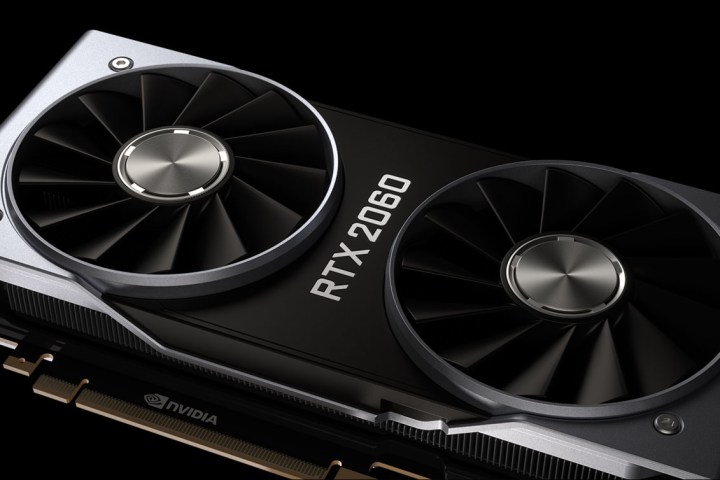To battle AMD’s approaching Radeon RX 5600 XT, Nvidia teamed up with its GPU partners to cut the prices of GeForce RTX 2060 cards. Nvidia’s non-super Founders Edition model now costs $299, down $50 from its original launch price back in January of 2019.
AMD’s Radeon RX 5600 XT arrives on January 21, 2020, for $279. The company expects it to outperform Nvidia’s GTX 1660 Ti, which also costs $279. AMD revealed the 5600 XT earlier this month during CES 2020, the first GPU from the company’s new Radeon RX 5600 Series lineup.

Based on the Navi 10 XLE chip, the Radeon RX 5600 XT includes 36 compute units (2,304 cores) with a 1,130MHz base clock, a 1,375MHz game clock, and a 1,560MHz boost clock. It also features 6GB of GDDR6 graphics memory using a 192-bit memory bus. The memory clock hits 12 Gbps while the bandwidth reaches 228 GB/s.
During its CES 2020 keynote, AMD showed the Radeon RX 5600 XT outperforming Nvidia’s GTX 1660 Ti by at least 10 frames in three games. For Gears 5, AMD’s card hit 87 frames per second versus Nvidia’s card at 69 FPS. In The Division 2, the Radeon card scored 88 FPS while Nvidia’s card only reached 74 FPS. There was only a 10-frame difference in Call of Duty: Modern Warfare. All three tests used a 1080p resolution and maximum graphics settings.
Third-party partners selling the Radeon RX 5600 XT next week include ASRock, Asus, Gigabyte, MSI, PowerColor, Sapphire, and XFX. They range from $299 for the EVGA Ko Gaming card up to the $339 Asus TUF 6GB RTX 2060.
With AMD poised to threaten the GTX 1660 Ti, Nvidia’s price drop makes sense. Based on the newer Turing architecture, the RTX 2060 packs a bigger graphics punch. The GTX 1660 Ti, meanwhile, is based on Nvidia’s older Pascal design.
That said, if PC gamers want a GPU with better performance without igniting their wallets, why not get the RTX 2060 at a low price versus AMD’s new RX 5600 XT? That may be Nvidia’s angle with this new price drop.
Still, AMD’s 1080p portfolio can’t be overlooked even more so with its new RX 5600 Series promising “max” 1080p gaming at a reasonable price.
Nvidia performed a similar price cut when it launched its Super cards in 2019 to battle the first batch of Radeon 5000 cards.



